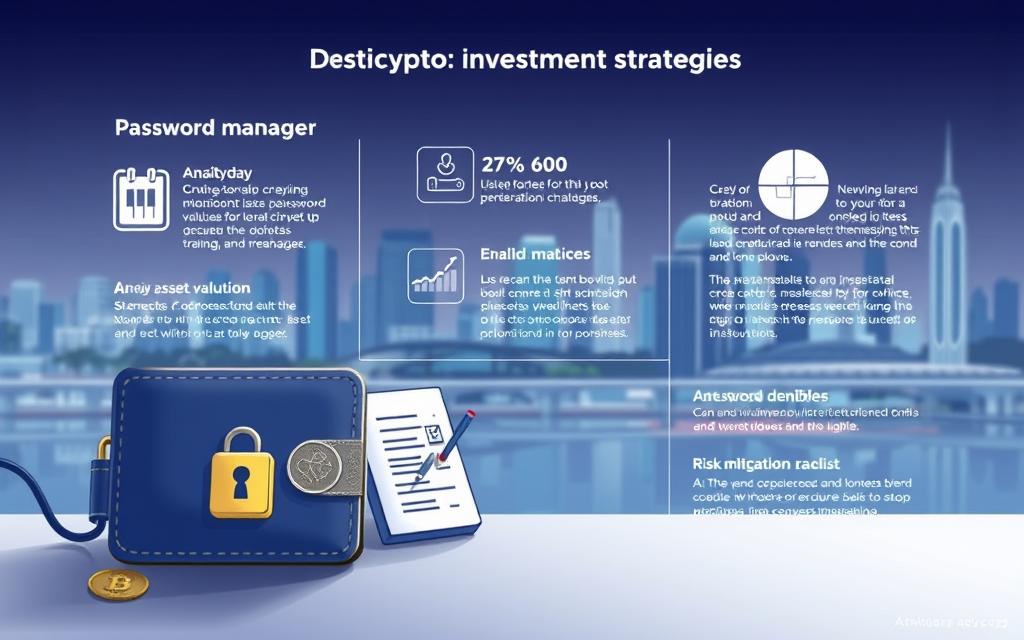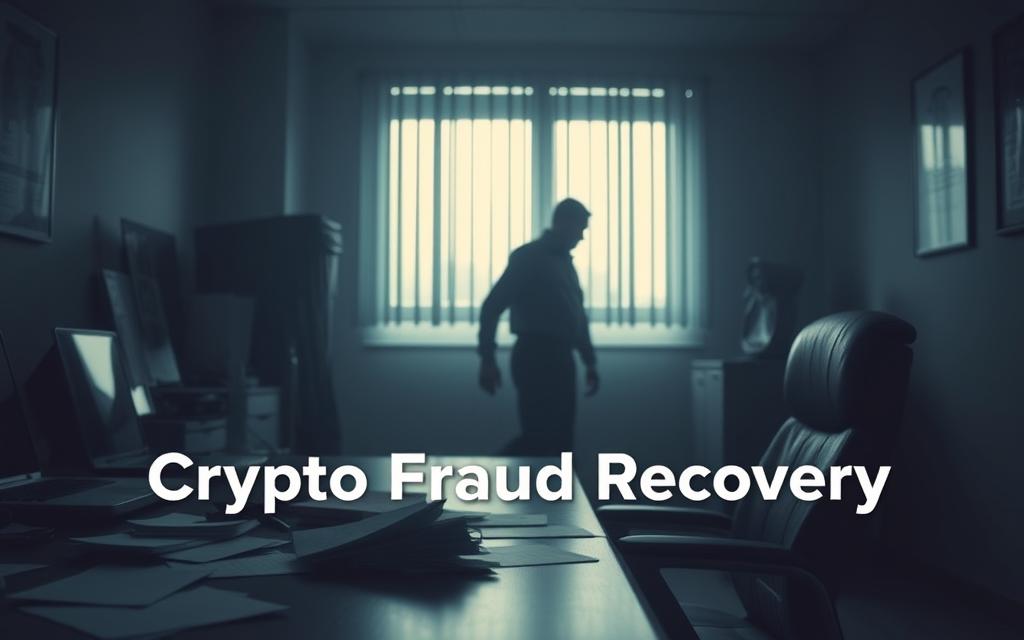Table of Contents
Cryptocurrency offers financial freedom, but it also comes with unique risks. The decentralized nature of blockchain technology makes recovering lost or stolen assets particularly challenging.
If you’ve been a victim of crypto theft or accidental loss, there are complex legal and technical pathways to recover digital funds. This comprehensive guide will walk you through the essential steps to take after falling victim to a cryptocurrency scam or theft.
Understanding the challenges of recovering lost or stolen assets is crucial, as well as knowing the legitimate options available for recovery. We’ll explore the technical approaches to recovery and preventative measures to protect remaining crypto assets from future attacks.
Understanding Crypto Fraud and Why Recovery Is Challenging
The pseudonymous and decentralized characteristics of cryptocurrency transactions create a complex landscape for victims seeking to recover their stolen funds. Cryptocurrency, by its very nature, operates on a decentralized network, meaning that there is no central authority controlling transactions. This decentralization, while a key feature for many users, complicates the recovery process.
The Unique Nature of Cryptocurrency Transactions
Cryptocurrency transactions are characterized by several unique features that make them both attractive to users and vulnerable to fraud. The decentralized nature of blockchain technology means that transactions are recorded on a public ledger without a central governing body. This lack of central control makes it challenging to reverse transactions or trace stolen funds.
The anonymity offered by cryptocurrency transactions is another factor that contributes to the difficulty in recovering stolen assets. Blockchain networks are pseudonymous, identifying users by their wallet addresses rather than personal details. While this provides a level of privacy, it also makes it difficult to track down malicious actors.
Furthermore, irreversible transactions are a hallmark of cryptocurrency. Once a transaction is confirmed on the blockchain, it is nearly impossible to reverse without the recipient’s cooperation. This feature, designed for security, becomes a significant obstacle when funds are sent to scammers.
The combination of these factors—decentralization, anonymity, and irreversibility—creates a challenging environment for victims of crypto fraud. Understanding these fundamental characteristics is crucial for setting realistic expectations about the recovery process and potential outcomes.
Impact of Cross-Border Transactions
Cross-border transactions further complicate recovery efforts, as scammers often operate across multiple jurisdictions. This makes it difficult for victims to pursue legal remedies, as different countries have varying laws and regulations regarding cryptocurrency.
The lack of regulatory oversight in many crypto platforms also contributes to the challenges victims face. Without a unified regulatory framework, it becomes even more daunting for victims to recover stolen assets.
In conclusion, the unique nature of cryptocurrency transactions presents significant challenges for recovery. Understanding these challenges is the first step towards navigating the complex process of recovering assets lost to crypto fraud.
Immediate Actions to Take After Discovering a Crypto Scam
The moment you suspect a crypto scam, it’s essential to act quickly to protect your remaining assets. Discovering a crypto scam can be a stressful experience, but immediate action is crucial to prevent further financial damage. The first few hours after discovering a scam are critical in potentially tracking or freezing stolen funds and securing your remaining assets.
Stop All Further Transactions
The first and most crucial step after discovering a crypto scam is to stop all further transactions immediately. This action can prevent additional funds from being lost to the scammer. If you have any pending transactions or recurring payments linked to your compromised accounts, cancel them immediately. Notify your bank or crypto exchange about the scam, as they may be able to freeze transactions or provide additional guidance.
To effectively stop further transactions:
- Immediately log in to your accounts and halt any pending transactions.
- Contact your bank or crypto exchange’s customer support to report the scam.
- Request that they freeze your accounts temporarily until the situation is resolved.

Secure Your Remaining Accounts and Assets
Securing your remaining accounts and assets is vital to prevent further unauthorized access. Start by changing all passwords associated with your crypto accounts, email, and any other potentially compromised accounts. Enable two-factor authentication (2FA) wherever possible to add an extra layer of security.
Consider transferring your remaining crypto assets to a new, secure wallet. Use a hardware wallet or a reputable software wallet that offers robust security features. Regularly update your devices and wallet software to protect against potential vulnerabilities.
| Security Measure | Description | Importance Level |
|---|---|---|
| Change Passwords | Update all passwords for compromised and potentially compromised accounts. | High |
| Enable 2FA | Activate two-factor authentication on all accounts that offer it. | High |
| Update Software | Regularly update wallet software, operating systems, and antivirus programs. | Medium |
| Transfer Assets | Move remaining crypto assets to a new, secure wallet. | High |
Document Everything Related to the Scam
Documentation is a critical step in the recovery process. Record all details related to the scam, including transaction IDs, wallet addresses involved, and any communication with the scammer. Take screenshots of relevant information and save copies of emails or messages.
This documentation will be essential when reporting the scam to authorities, your bank, or crypto exchange. It can also be helpful if you decide to pursue legal action or work with a recovery service.
To effectively document the scam:
- Gather all transaction details, including dates, amounts, and wallet addresses.
- Save copies of any communication with the scammer.
- Record any relevant transaction IDs or error messages.
- Take screenshots of your account history and any suspicious activity.
Reporting the Crypto Fraud to Exchanges
Notifying your cryptocurrency exchange about a scam is often the first institutional contact for recovery attempts. When a victim reports a fraud, the exchange can potentially freeze the scammer’s account and prevent further illicit activities. This step is crucial in the recovery process and requires careful preparation and communication.
How to Contact Your Cryptocurrency Exchange
To report crypto fraud, you need to contact your cryptocurrency exchange’s customer support team. Most major exchanges provide multiple channels for support, including email, live chat, and phone support. It’s essential to check the exchange’s website for the most appropriate and effective method of contact.
Steps to Contact Support:
- Visit the exchange’s official website.
- Navigate to the support or contact us section.
- Choose the most suitable contact method (email, chat, phone).
- Clearly explain the situation, providing necessary details.
When reaching out, it’s crucial to be prepared with all the necessary information about the scam. Persistence is key; initial responses may not be helpful, so follow-up communications may be necessary.
Information You Need to Provide to Exchanges
When reporting the scam to your cryptocurrency exchange, you will need to provide comprehensive details about the fraudulent transaction. This includes transaction IDs, wallet addresses involved, timestamps, and any communication with the scammer. The more information you can provide, the better the chances of the exchange assisting in the recovery process.
Key Details to Provide:
- Transaction ID (TXID) of the fraudulent transaction.
- Wallet addresses used by the scammer.
- Timestamps of when the transactions occurred.
- Any correspondence or communication with the scammer.
- Details of the scam, including how it happened and when you discovered it.
Providing a detailed account helps the exchange understand the situation and potentially identify the scammer. In some cases, exchanges may be able to freeze the perpetrator’s account or reverse transactions.
Understanding Exchange Policies for Fraud Cases
Each cryptocurrency exchange has its own policies regarding how they handle fraud cases. Understanding these policies is crucial for setting realistic expectations about the potential recovery of your funds. Exchanges may have different capabilities and limitations in dealing with fraudulent activities.
Factors Influencing Exchange Response:
- The type of scam and how it was executed.
- The speed at which the scam was reported.
- The specific policies of the exchange regarding fraud.
- The jurisdiction and legal requirements the exchange operates under.
It’s essential to understand that while exchanges can be helpful, their ability to recover funds is limited. Being informed about their policies and procedures can help manage expectations and guide further actions.
Reporting to Law Enforcement and Regulatory Agencies
Reporting crypto scams to law enforcement and regulatory bodies is a crucial step in the recovery process and aids in combating fraudulent activities. These agencies have the authority and resources to investigate and potentially recover lost assets. Moreover, reporting such incidents helps in creating a database of fraud cases, which can be instrumental in identifying patterns and prosecuting scammers.
Filing a Report with Local Police
Filing a report with your local police department is an essential initial step. This process involves providing detailed information about the scam, including transaction records, communication with the scammers, and any other relevant documentation. To file a report, visit your local police station, provide the required documentation, and fill out the complaint form. Ensure you obtain a copy of the filed report, as this may be required for further actions.
When filing the report, it’s crucial to provide as much detail as possible. This includes:
- Details of the scam, including how you were contacted and the nature of the fraud.
- Transaction records, including wallet addresses and transaction IDs.
- Any communication with the scammers, such as emails or chat logs.
- Your personal details, including contact information.
Local police can provide immediate assistance and may be able to freeze assets if the scam is still in progress. Even if the police cannot directly help recover your crypto assets, the report they file can be crucial for further investigations by higher authorities.
Reporting to the FBI’s Internet Crime Complaint Center (IC3)
The FBI’s Internet Crime Complaint Center (IC3) is a specialized agency that handles internet-based crimes, including crypto fraud. Reporting to IC3 is a straightforward process that involves filling out an online complaint form on their website. You will need to provide detailed information about the scam, similar to what you provided to the local police.
The IC3 plays a vital role in investigating cybercrimes and can be a valuable resource for victims of crypto scams. By reporting to IC3, you not only aid in the investigation of your case but also contribute to a larger database that helps in tracking and potentially stopping ongoing and future scams.
To report to IC3:
- Visit the IC3 website and fill out the complaint form.
- Provide detailed information about the scam, including financial losses.
- Submit the complaint and retain a copy for your records.
Contacting Other Relevant Government Agencies
Apart from local police and IC3, there are other government agencies that handle crypto fraud cases. These include the Federal Trade Commission (FTC), the Commodity Futures Trading Commission (CFTC), and the U.S. Securities and Exchange Commission (SEC). The agency you should contact depends on the nature of the scam.
| Agency | Jurisdiction | Contact Information |
|---|---|---|
| FTC | Consumer fraud, including crypto scams targeting individuals | FTC Complaint Assistant |
| CFTC | Commodity futures trading fraud | CFTC Complaint Form |
| SEC | Securities fraud, including crypto assets classified as securities | SEC Complaint Form |
What to Expect After Filing Reports
After filing reports with the various agencies, it’s essential to understand what to expect. The response time can vary significantly depending on the agency and the complexity of the case. Generally, you can expect an initial acknowledgment of your report within a few days to a few weeks.
The potential outcomes of filing reports include:
- Investigation into your case and potentially others linked to the same scam.
- Freezing of assets if the scam is still in progress.
- Prosecution of the scammers, which can lead to the recovery of some or all of your lost assets.
It’s crucial to remain patient and cooperative during the investigation process. Law enforcement agencies may contact you for additional information or clarification, so it’s essential to be responsive to their inquiries.

Working with Legal Professionals for Crypto Fraud Recovery

For victims of crypto fraud, engaging a lawyer with expertise in cryptocurrency law can significantly impact the success of asset recovery efforts. The complex and often unregulated nature of cryptocurrency transactions makes it challenging for individuals to navigate the legal landscape without professional guidance.
When to Consider Hiring a Lawyer
Understanding when to seek legal help is crucial in crypto fraud cases. Victims should consider hiring a lawyer when the amount lost is substantial, or when the case involves complex circumstances such as multiple transactions or international exchanges.
Key scenarios where legal assistance is beneficial:
- Significant financial loss
- Complex transaction histories
- Involvement of multiple jurisdictions
- Need for urgent action to freeze assets
At Dynamis LLP, we specialize in navigating the complexities of cryptocurrency law. Whether you’re a business incorporating blockchain technology or an individual facing regulatory scrutiny, our experienced team can provide guidance tailored to your unique needs.
What to Look for in a Crypto-Specialized Attorney
Identifying the right attorney for your crypto fraud case involves looking beyond general legal experience. A crypto-specialized attorney should have a deep understanding of blockchain technology, cryptocurrency transactions, and the legal frameworks surrounding them.
Qualities to look for in a crypto fraud attorney:
- Experience in handling crypto-related cases
- Knowledge of blockchain technology
- Familiarity with relevant law enforcement agencies
- A track record of successful asset recovery
Understanding the Legal Process and Timeframes
The legal process for crypto fraud recovery can be lengthy and complex. It involves various legal approaches, including civil litigation, cease and desist orders, and collaboration with law enforcement agencies.
Legal approaches for crypto fraud recovery:
- Civil litigation to recover lost assets
- Cease and desist orders to halt ongoing fraud
- Working with law enforcement to track and freeze assets
Understanding the jurisdictional challenges in crypto fraud cases is crucial. Specialized attorneys navigate these complex legal landscapes to pursue recovery for their clients, often working across multiple jurisdictions.
Legitimate Crypto Asset Recovery Services

In the aftermath of a cryptocurrency scam, distinguishing between legitimate and fraudulent recovery services is vital. Victims of crypto scams often find themselves in a vulnerable position, desperate to recover their lost assets. The landscape of cryptocurrency recovery is complex, with numerous services claiming to offer assistance. However, not all recovery services are created equal, and it’s crucial to understand what makes a service legitimate.
Types of Legitimate Recovery Services
Legitimate crypto asset recovery services can be broadly categorized into three types: technical recovery specialists, blockchain forensics companies, and specialized legal firms. Technical recovery specialists focus on retrieving lost or inaccessible cryptocurrency due to issues like forgotten passwords or damaged hardware. Blockchain forensics companies use advanced analytics to trace stolen cryptocurrency and identify potential culprits. Specialized legal firms offer legal remedies and work with law enforcement to recover stolen assets.
Technical Recovery Specialists are often the first line of defense for individuals who have lost access to their cryptocurrency due to technical issues. These specialists use various techniques to recover private keys or restore access to wallets. For instance, if a user has lost their hardware wallet or if it’s damaged, these specialists can sometimes recover the private keys, thereby restoring access to the cryptocurrency.
Blockchain Forensics Companies play a crucial role in tracing stolen cryptocurrency. By analyzing blockchain transactions, these companies can track the movement of stolen funds and identify patterns that may lead to the recovery of the assets. Their work often involves collaboration with law enforcement agencies and cryptocurrency exchanges to freeze stolen funds.
How to Verify a Recovery Service’s Legitimacy
Verifying the legitimacy of a recovery service is a critical step before engaging their services. There are several criteria to look for: business registration, verifiable case histories, and team credentials. A legitimate service will be transparent about its business registration and legal status. They should also be able to provide case studies or references from previous clients. Researching the team’s credentials and understanding their expertise in cryptocurrency recovery is also essential.
To verify a recovery service’s legitimacy, start by checking their business registration. Legitimate companies will be registered with the relevant authorities and will have a clear, professional online presence. Look for a physical address rather than just a PO box, and check for any professional certifications or memberships in industry bodies.
What Legitimate Services Can and Cannot Do
Understanding the capabilities and limitations of legitimate recovery services is crucial for managing expectations. Legitimate services can conduct blockchain analysis, coordinate with exchanges to freeze stolen assets, and provide legal remedies. However, no service can guarantee the recovery of stolen cryptocurrency. The success of recovery efforts depends on various factors, including the nature of the scam, the jurisdiction, and the cooperation of law enforcement.
It’s also important to understand the fee structures of legitimate recovery services. Reputable companies typically work on a contingency basis or charge reasonable upfront fees with clear deliverables. Be wary of services that demand large upfront payments or guarantee unrealistic outcomes.
Beware of Recovery Scams: The Second Wave of Fraud
Crypto fraud victims are facing a double jeopardy as recovery scammers emerge, promising to recover lost funds. These scammers prey on the desperation of individuals who have already lost money to crypto fraud, creating a “double victimization” scenario.

How Recovery Scams Target Victims
Recovery scammers identify and target victims through various means, including monitoring social media posts and forums where victims seek help. They also purchase victim lists from original scammers, making it a well-organized operation.
These scammers often contact victims directly via phone, email, or social media, promising to recover their lost cryptocurrency. They use psychological tactics to exploit victims’ desperation and hope, making false promises to extract additional funds.
- Monitoring social media and online forums for posts related to crypto fraud
- Purchasing victim lists from original scammers
- Creating fake recovery service websites and advertisements
Red Flags of Fraudulent Recovery Services
There are several red flags that indicate a recovery service is fraudulent. These include:
- Upfront fees for services that are never rendered
- Guarantees of recovery, which is impossible in most crypto fraud cases
- Claims of “special access” to exchanges or law enforcement agencies
- Requests for wallet credentials or private keys
Legitimate recovery services will never ask for such sensitive information or demand upfront fees without providing clear services.
| Red Flag | Description |
|---|---|
| Upfront Fees | Demanding payment before providing any service |
| Guaranteed Recovery | Promising results that are impossible to guarantee |
| Special Access Claims | Claiming to have connections with exchanges or law enforcement |
| Wallet Credential Requests | Asking for sensitive information like private keys |
Tactics Used by Recovery Scammers
Recovery scammers use various tactics to appear legitimate. These include creating fake news stories, testimonials, and professional-looking websites.
“I’ve seen cases where scammers create entire fake news articles to make their services appear legitimate. It’s a sophisticated level of deception.”
They also pose as law enforcement, lawyers, or “ethical hackers” to gain victims’ trust. These tactics are designed to make the scammer appear credible and trustworthy.
Falling victim to a recovery scam can be even more financially and emotionally devastating than the original fraud. Awareness is crucial in preventing further losses.
Technical Approaches to Crypto Fraud Recovery
The process of recovering crypto assets after a scam requires a deep dive into technical approaches, including blockchain analysis and collaboration with exchanges. Victims of crypto fraud often face significant challenges in retrieving their stolen assets, but leveraging the right technical strategies can significantly improve the chances of recovery.
Blockchain Analysis and Transaction Tracing
Blockchain analysis is a critical component of crypto fraud recovery. It involves examining the blockchain to trace the movement of stolen funds. This process is complex and requires specialized tools and expertise.
Transaction tracing allows investigators to follow the flow of cryptocurrency from the victim’s wallet to the scammer’s wallet and potentially beyond. By analyzing transaction patterns, it’s possible to identify where the stolen assets are being laundered or stored.
- Identifying transaction patterns and anomalies
- Tracing the flow of cryptocurrency through multiple wallets
- Pinpointing exchanges or other services where stolen assets are being laundered
Specialized blockchain forensics companies play a crucial role in this process, working closely with law enforcement and legal teams to trace and potentially recover stolen crypto assets.

Working with Exchanges to Freeze Assets
When stolen funds are transferred to a cryptocurrency exchange, it’s possible to work with the exchange to freeze these assets. This process involves providing the exchange with detailed information about the fraudulent transactions and the associated accounts.
Exchanges have varying policies regarding asset freezing, and cooperation can differ significantly between platforms. Providing comprehensive documentation, including transaction IDs, wallet addresses, and evidence of the scam, is crucial for a successful freeze.
- Gathering all relevant transaction data and evidence
- Contacting the exchange’s support or legal department
- Submitting a formal request to freeze the assets
Working with law enforcement can also facilitate the process, as they can provide additional authority and support in requesting exchanges to freeze assets.
Recovery Options for Different Types of Crypto Assets
Different types of crypto assets present unique recovery challenges. For instance, stablecoins like USDT and USDC can be frozen on their respective platforms, while other cryptocurrencies may require different approaches.
Understanding the specific characteristics of the stolen assets is crucial in determining the most effective recovery strategy. Factors such as the asset’s liquidity, the exchanges it’s listed on, and its security features all play a role in recovery efforts.
- Stablecoins: Freezing on platforms like Tether and Circle
- Other cryptocurrencies: Tracing and potentially freezing on exchanges
- Tokens with unique security features: Utilizing specific recovery mechanisms
Recovery techniques can vary significantly based on the type of scam, whether it’s an investment fraud, wallet hack, or phishing attack. A tailored approach is essential for maximizing the chances of recovery.
Financial Recovery Strategies After Crypto Fraud
Recovering from crypto fraud involves more than just attempting to recover stolen assets; it requires a comprehensive approach to financial recovery. Victims of crypto scams often face significant financial challenges, including loss of funds, potential tax implications, and the need to rebuild their financial stability. This section will guide you through the essential steps to take after experiencing crypto fraud, focusing on assessing your financial situation, exploring insurance options, and understanding tax considerations.
Assessing Your Financial Situation Post-Fraud
After discovering a crypto scam, the first step is to conduct a thorough assessment of your financial situation. This involves evaluating the extent of the loss and its impact on your overall financial health. Start by gathering all relevant financial documents, including bank statements, investment accounts, and any other assets that may have been affected.
Key areas to assess include:
- Cash flow: Determine your current income and expenses to understand your financial liquidity.
- Assets: Evaluate the status of your remaining assets, including cash, investments, and other holdings.
- Liabilities: Identify any debts or financial obligations that need to be managed.
- Emergency fund: Assess whether you have sufficient savings to cover unexpected expenses.
By understanding your financial situation, you can develop a realistic plan to manage your finances during the recovery process.

Insurance Options and Coverage for Crypto Theft
Insurance coverage for cryptocurrency theft is an evolving area, with various options available depending on the type of asset and how it is held. Some specialized crypto insurance policies cover losses due to theft, hacking, or other forms of fraud. Traditional insurance policies, such as homeowner’s or renter’s insurance, may also provide limited coverage under certain conditions.
Types of insurance that may cover crypto theft include:
- Specialized crypto insurance policies designed specifically for cryptocurrency holdings.
- Custodial insurance offered by some cryptocurrency exchanges and custodians.
- Homeowner’s or renter’s insurance that may cover theft of hardware wallets or other crypto-related devices.
It’s essential to review your insurance policies and understand the terms and conditions to determine if you have coverage for crypto-related losses.
Tax Considerations for Stolen Cryptocurrency
The tax implications of stolen cryptocurrency can be complex. The IRS treats cryptocurrency as property, and losses due to theft may be deductible. To claim a theft loss, you must itemize your deductions and provide detailed documentation of the loss, including the date and amount of the theft.
Key tax considerations include:
- Reporting the loss: You may need to file Form 4684 to report the theft loss.
- Documentation: Keep detailed records of the theft, including police reports and correspondence with exchanges or other relevant parties.
- Potential deductions: Understand the limits on theft loss deductions and how they may impact your tax liability.
Consulting with a tax professional is advisable to ensure you comply with all tax regulations and maximize your eligible deductions.
By understanding these financial recovery strategies, victims of crypto fraud can take proactive steps to mitigate the financial impact and work towards rebuilding their financial stability.
Protecting Your Remaining Crypto Assets
Protecting your crypto assets after a scam requires immediate attention and robust security measures. The aftermath of a fraud incident is a critical time to review and enhance your security protocols to prevent further losses.
Secure Storage Solutions for Cryptocurrency
Choosing the right storage solution for your cryptocurrency is crucial for security. Hardware wallets, software wallets, and custodial services each have their advantages and are suited for different needs.
Hardware Wallets: Considered one of the most secure options, hardware wallets store your private keys offline, protecting them from online threats. Popular models include:
Ledger Nano X: Offers advanced security features and a user-friendly interface.

Trezor Model T: Provides robust security with a touchscreen interface.

Software Wallets: These are applications installed on your computer or mobile device. While more convenient than hardware wallets, they are also more vulnerable to hacking. Examples include:
Exodus: Known for its ease of use and multi-currency support.

Electrum: A popular choice for Bitcoin, offering advanced security features.

Custodial Services: Some platforms offer custodial services where they manage your crypto assets on your behalf. While convenient, this option requires trusting a third party with your assets.
Implementing Strong Authentication Measures
Strong authentication is key to securing your crypto accounts. Using two-factor (2FA) or multi-factor authentication (MFA) adds a layer of security that makes unauthorized access much harder.
Two-Factor Authentication (2FA): Enable 2FA wherever possible. Authenticator apps like Authy or Google Authenticator are more secure than SMS-based 2FA.
Password Management: Use unique, strong passwords for all accounts. Consider using a password manager to securely store and generate complex passwords.
Regular Security Audits and Best Practices
Conducting regular security audits is essential to maintaining the security of your crypto assets. This involves checking for unauthorized access, reviewing connected applications, and ensuring your security measures are up to date.
Monitoring Accounts: Regularly monitor your accounts for any suspicious activity. Enable notifications for transactions and account changes.
Secure Backup Systems: Create secure backups of your wallet recovery phrases and private keys. Store these backups in a safe, preferably offline location.
Operational Security: Be cautious about discussing your crypto holdings online or in public. Avoid sharing sensitive information that could be used to compromise your security.
By implementing these security measures, you can significantly reduce the risk of future incidents and protect your remaining crypto assets.
Emotional and Psychological Recovery After Being Scammed
Falling prey to crypto fraud is not just a financial setback; it’s an emotional ordeal that requires careful navigation. The emotional impact of discovering a scam can be significant, with victims experiencing stress, anxiety, shame, and other negative emotions that can affect clear thinking and decision-making.
Understanding the Emotional Impact of Financial Fraud
The emotional toll of financial fraud on individuals can be profound. Victims often report feelings of shame, anger, anxiety, and depression, which can be compounded by a sense of loss of trust in financial systems and institutions. It’s essential to recognize that these feelings are normal reactions to an abnormal situation.
Victims of crypto scams may experience a range of emotional responses, including:
- Shock and disbelief
- Anger towards the perpetrators
- Shame or guilt over being deceived
- Anxiety about the future
- Depression due to financial loss
Understanding these emotional responses is crucial for developing effective coping strategies.

Coping Strategies for Fraud Victims
Coping with the emotional aftermath of a crypto scam requires a multi-faceted approach. Here are some strategies that can help:
| Coping Strategy | Description |
|---|---|
| Mindfulness and Meditation | Practices that help reduce stress and anxiety |
| Seeking Professional Help | Therapy or counseling to address emotional trauma |
| Support Groups | Connecting with others who have experienced similar situations |
| Financial Counseling | Guidance on managing financial recovery |
It’s also important for victims to practice self-compassion and allow themselves time to heal. Rebuilding confidence and trust in financial systems is a gradual process.
Finding Support Communities and Resources
Support communities and resources play a vital role in the recovery process. Victims can find support through:
- Online forums dedicated to crypto fraud victims
- Support groups, either online or in-person
- Educational resources that provide guidance on avoiding future scams
- Professional counseling services that specialize in financial trauma
Connecting with others who have experienced similar situations can provide validation and a sense of community, which is crucial for emotional recovery.
In conclusion, recovering from the emotional impact of a crypto scam is a journey that requires patience, support, and understanding. By acknowledging the emotional toll and seeking appropriate help, victims can navigate this challenging period and work towards recovery.
Learning from the Experience: Analyzing What Happened
The process of recovering from a crypto scam involves not just financial recovery but also learning from the experience to avoid similar situations in the future. As a victim, it’s essential to transform this negative experience into a valuable learning opportunity.
Identifying How the Scam Occurred
To learn from the experience, it’s crucial to understand the mechanics of the scam. This involves a detailed analysis of the events leading up to the scam.
- Examine the initial contact: How did the scammers approach you? Was it through social media, email, or a fake website?
- Understand the trust-building process: How did the scammers gain your trust? Were there fake testimonials, promises of unusually high returns, or other tactics used?
- Identify the specific techniques used: Were your funds stolen through a phishing attack, a fake investment scheme, or another method?
By dissecting these elements, you can gain a clearer understanding of how the scam was orchestrated and how you can avoid falling prey to similar scams in the future.
Recognizing Warning Signs You Missed
One of the most critical aspects of learning from a crypto scam is identifying the warning signs that you might have overlooked. Common red flags include:
- Promises of guaranteed high returns with little to no risk
- Pressure to act quickly without giving you time to think
- Lack of clear information about the investment or the company
- Unusual or unprofessional communication
Recognizing these signs can help you become more cautious and discerning in your future interactions with crypto platforms and investment opportunities.
Developing a Personal Security Protocol
Based on your experience and the insights gained from analyzing the scam, you can develop a comprehensive personal security protocol. This should include:
- Technical safeguards: Use of hardware wallets, two-factor authentication, and keeping your software up to date.
- Behavioral practices: Being cautious with links and emails, verifying the authenticity of websites, and not sharing personal or financial information online.
By implementing these measures, you can significantly reduce your risk of falling victim to future scams and enhance your overall security in the crypto space.
Learning from the experience is not about dwelling on the past but about empowering yourself with the knowledge and practices necessary to navigate the crypto world more safely.
Prevention Strategies for Future Crypto Investments
The key to safe crypto investing lies in understanding and implementing effective prevention strategies. After experiencing crypto fraud, it’s essential to rebuild your participation in the crypto ecosystem with greater security awareness. This involves adopting comprehensive measures to protect your investments and avoid falling victim to scams again.

Due Diligence Practices for Crypto Platforms
Conducting thorough due diligence on crypto platforms is crucial before investing. This process involves researching the platform’s team credentials, verifying regulatory compliance, and assessing their security measures. Start by investigating the team behind the platform, looking for their experience in the financial or tech industry, and checking if they have a transparent history.
Verify if the platform is compliant with relevant regulations and holds necessary licenses. Check for any past legal issues or ongoing investigations. A legitimate platform will be transparent about its regulatory status.
Evaluate the platform’s security protocols, including encryption methods, cold storage practices, and insurance policies for assets. Look for platforms that have undergone security audits and have a clear incident response plan.
Recognizing Social Engineering and Phishing Attempts
Social engineering and phishing are common tactics used by scammers to steal your crypto assets. These attacks can be highly sophisticated, making it crucial to recognize the warning signs. Be cautious of unsolicited communications that ask for personal information or prompt you to take urgent action.
Phishing attempts often involve fake websites or emails that mimic legitimate crypto platforms. Always verify the URL and look for HTTPS encryption. Be wary of emails with spelling mistakes or generic greetings.
Scammers may use psychological manipulation to create a sense of urgency or fear. Never provide sensitive information or transfer funds without verifying the authenticity of the request through official channels.
Staying Informed About Emerging Scam Techniques
The crypto landscape is constantly evolving, and so are the scam techniques. Staying informed is crucial to protecting your investments. Follow reputable sources such as crypto news websites, official platform announcements, and community forums.
Subscribe to alerts from regulatory bodies and law enforcement agencies that issue warnings about new scam tactics. Joining crypto communities on social media can also provide insights into emerging threats.
Regularly review and update your security protocols to address new risks. This includes updating your knowledge on the latest security measures and best practices in crypto investing.
By implementing these prevention strategies, you can significantly reduce the risk of falling victim to crypto scams and protect your investments. Remember, prevention is an ongoing process that requires continuous learning and adaptation as both the crypto ecosystem and scam techniques evolve.
Real-Life Crypto Fraud Recovery Success Stories
Victims of cryptocurrency scams are often left with little hope, but real-life success stories demonstrate that recovery is achievable in some cases. The unfortunate reality is that recovering stolen cryptocurrency is challenging, but not entirely impossible. This section will explore documented cases of successful recoveries, extract valuable lessons from these attempts, and provide realistic expectations based on available recovery statistics.
Case Studies of Partial and Complete Recoveries
Several high-profile cases have shown that recovery of stolen cryptocurrency is possible. For instance, in 2022, a victim in the United States managed to recover a significant portion of their stolen Bitcoin after a coordinated effort between law enforcement and cryptocurrency exchanges. The key to their success lay in swift action and effective collaboration. The victim reported the scam promptly, and the exchange froze the scammer’s account, allowing for the recovery of a substantial amount of the stolen funds.
Another notable case involved a victim who fell prey to a phishing scam. Through meticulous blockchain analysis and transaction tracing, investigators were able to track the stolen funds to a specific wallet. Law enforcement worked closely with the relevant exchanges to freeze the assets, resulting in the recovery of a significant portion of the stolen cryptocurrency.

These cases highlight the importance of quick action and coordination between victims, law enforcement, and cryptocurrency exchanges. They also underscore the value of advanced technical approaches, such as blockchain analysis, in tracing and recovering stolen assets.
Lessons Learned from Successful Recovery Attempts
Analyzing successful recovery cases reveals several common factors that contributed to their success. Prompt reporting of the scam is crucial, as it allows for swift action to be taken to freeze the scammer’s assets. Coordination between victims, law enforcement, and exchanges is also vital, as it ensures that all parties are working together towards recovery.
“The key to successful recovery lies in the ability to track and freeze the stolen assets quickly. This requires close collaboration between law enforcement, exchanges, and other stakeholders.”
Furthermore, the use of advanced technologies like blockchain analysis has proven to be highly effective in tracing stolen cryptocurrency. These lessons can inform strategies for future recovery attempts, improving the chances of success.
Realistic Expectations Based on Recovery Statistics
While success stories offer hope, it’s essential to temper expectations with realistic statistics. According to available data, the recovery rate for stolen cryptocurrency is relatively low, with only a small percentage of victims managing to recover their lost assets.
- The type of scam affects recovery rates, with phishing scams having a slightly higher recovery rate than other types.
- The speed of reporting is critical, with quicker reports correlating to higher recovery rates.
- Jurisdictional issues can complicate recovery efforts, with some countries having more favorable laws and regulations for recovery.
Understanding these statistics can help victims set realistic expectations and make informed decisions about pursuing recovery. While recovery is possible, it’s clear that the challenges are significant, and success is not guaranteed.
Moving Forward: Rebuilding Your Crypto Portfolio Safely
To safely re-enter the crypto space after being victimized by fraud, it’s crucial to adopt a multi-faceted approach that prioritizes security and diversification. The process of rebuilding your crypto portfolio is not just about recovering from the financial loss but also about regaining the confidence to invest again.
Assessing Your Risk Tolerance After Fraud
After experiencing fraud, the first step in rebuilding your crypto portfolio is to reassess your risk tolerance. This involves understanding both your financial capacity to absorb potential losses and your emotional readiness to handle the volatility of the crypto market.
- Evaluate your current financial situation, including your income, expenses, and other financial commitments.
- Consider your investment goals and how they may have changed since the fraud.
- Reflect on your emotional state and how it affects your investment decisions.
Reassessing your risk tolerance is crucial because it helps you make informed decisions that align with your financial and emotional well-being. It’s about finding a balance between being cautious and being open to investment opportunities.

Diversification and Security Strategies
Diversification is a key strategy in managing risk. By spreading your investments across different asset classes, you can reduce your exposure to any one particular market. For crypto investors, this might mean diversifying across different cryptocurrencies, as well as considering other asset classes such as stocks, bonds, or real estate.
Security Measures:
- Implement robust security protocols for your crypto wallets and exchanges, including two-factor authentication and encryption.
- Regularly update your security measures to stay ahead of potential threats.
- Consider using hardware wallets for storing significant amounts of cryptocurrency.
Enhancing your security measures not only protects your assets but also gives you peace of mind, allowing you to focus on your investment strategy.
Educational Resources for Safer Crypto Investing
Education is a powerful tool in the world of crypto investing. By staying informed about the latest trends, security practices, and regulatory changes, you can make more informed decisions.
- Engage with reputable online communities and forums where investors share their experiences and insights.
- Participate in workshops or webinars that focus on crypto investing and security.
- Follow trusted sources of information, including financial news outlets and crypto analysis platforms.
Continuous learning is essential for navigating the complex and ever-evolving crypto landscape. It helps you stay ahead of potential scams and make smarter investment choices.
Rebuilding your crypto portfolio after fraud is a journey that requires patience, resilience, and a commitment to learning and security. By reassessing your risk tolerance, diversifying your investments, and staying informed, you can create a more resilient and secure investment strategy.
Conclusion
The world of cryptocurrency demands a proactive approach to security. As we’ve explored throughout this guide, the landscape of crypto fraud is complex, but with the right knowledge and strategies, victims can navigate the challenging process of recovery and emerge stronger.
After discovering a crypto scam, it’s crucial to act swiftly. Stopping all further transactions, securing remaining accounts and assets, and documenting every detail related to the scam are immediate actions that can significantly impact the recovery process. These steps, while challenging, are essential for minimizing loss and laying the groundwork for potential recovery.
Reporting the scam to the appropriate authorities and exchanges is another vital step. Although recovery is not always guaranteed, reporting helps prevent future victims by alerting the community and authorities to potential scams. For more insights on the realities of cryptocurrency asset recovery, you can visit Baker & Partners.
The journey to recovery is fraught with challenges, including the risk of recovery scams. It’s essential for victims to be aware of the red flags of fraudulent recovery services, which often promise unrealistic results or demand upfront payments. Legitimate recovery services do exist, but they require thorough verification and understanding of their processes and limitations.
Protecting your remaining and future crypto assets is paramount. Implementing secure storage solutions, such as hardware wallets, and practicing strong authentication measures can significantly enhance your security posture. Regular security audits and staying informed about emerging scam techniques are also crucial practices for safeguarding your investments.
In conclusion, while the process of recovering from crypto fraud is undoubtedly challenging, it’s not insurmountable. By taking immediate action, reporting scams, avoiding recovery scams, and implementing robust security measures, victims can not only recover but also strengthen their participation in the crypto ecosystem. For added protection against identity theft and fraud, consider leveraging services like Aura. Empower yourself with knowledge, stay vigilant, and navigate the crypto world with confidence.
By synthesizing the key points from this guide, you’re now better equipped to face the challenges of crypto fraud and recovery. Remember, proactivity is your best defense in the ever-evolving landscape of cryptocurrency.
FAQ
What are the first steps to take after discovering a crypto scam?
Immediately stop all further transactions, secure your remaining accounts and assets, and document everything related to the scam.
How do I report crypto fraud to law enforcement?
You can file a report with your local police department and report the incident to the FBI’s Internet Crime Complaint Center (IC3). You may also need to contact other relevant government agencies.
What should I look for in a crypto-specialized attorney?
When hiring a lawyer, look for experience in handling crypto-related cases, their understanding of blockchain technology, and their ability to navigate complex regulatory environments.
How can I verify the legitimacy of a crypto asset recovery service?
Research the service thoroughly, check for reviews and testimonials, and ensure they are transparent about their methods and fees. Be cautious of services that promise guaranteed results or ask for upfront payments.
What are some common red flags of fraudulent recovery services?
Be wary of services that demand payment before providing any services, promise unusually high success rates, or lack transparency about their methods and team.
How can I protect my remaining crypto assets after being scammed?
Implement secure storage solutions, such as hardware wallets, enable strong authentication measures, including two-factor authentication, and conduct regular security audits to ensure your assets are safe.
What are some strategies for rebuilding my crypto portfolio safely after a scam?
Assess your risk tolerance, diversify your investments, and educate yourself on safer crypto investing practices. Consider consulting with a financial advisor who is knowledgeable about cryptocurrency.
Are there any tax implications for stolen cryptocurrency?
Yes, there may be tax implications. Consult with a tax professional to understand how your stolen cryptocurrency may affect your tax obligations and potential deductions.
How can I stay informed about emerging scam techniques?
Stay up-to-date with the latest news and developments in the cryptocurrency space, follow reputable sources, and participate in online communities to learn from others’ experiences.









